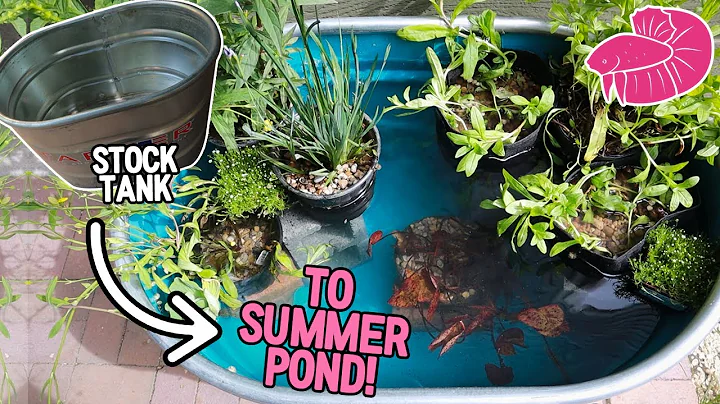Polish Scratches and Swirls on Your Harley-Davidson with Ease
Table of Contents
- Introduction
- Prepping the Surface
- Washing the Vehicle
- Clay Bar Treatment
- Choosing the Right Polisher
- Dual Action Polisher
- Rotary Polisher
- Selecting the Correct Pad
- Green Polishing Pad
- White Pad
- Applying the Scratch and Swirl Remover
- Prepping the Pad
- Using Pad Conditioner
- Applying the Product
- Polishing Technique
- Setting up a Tape Line
- Spreading the Product
- Polishing Technique
- Buffing off Excess Product
- Results and Conclusion
- Additional Tips and Considerations
- FAQ
🏍️ How to Polish Scratches and Swirls on a Harley-Davidson
When it comes to maintaining the appearance of your Harley-Davidson motorcycle, one of the most common issues is scratches and swirls on the paintwork, especially on darker colors like black. However, with the right techniques and products, you can easily polish out these imperfections and restore the shine to your bike. In this article, we'll take you through a step-by-step guide on how to effectively polish scratches and swirls on your Harley-Davidson, leaving it looking as good as new.
1. Introduction
Before diving into the process of polishing, it's essential to start with a clean surface. Begin by washing off any loose contaminants or debris that may have landed on the paint. Using a motorcycle-specific wash and wax product, spray it onto the surface and wipe off in one direction using a clean microfiber towel. This will help remove any light dust, fingerprints, or other contaminants, providing a clean base for the next step.
2. Prepping the Surface
To ensure a smooth and flawless polish, it's important to address any embedded contaminants in the paint. For this, using a clay bar is highly recommended. Take a light clay bar and clay lube, and knead the clay into a paddy. Before applying it to the paint, make sure to lubricate the clay using clay lube. Spray the lubricant onto the surface and then start clay barring, working in straight lines with light pressure. As you move the clay bar across the paint, it will pull out any embedded contaminants, leaving the surface ready for polishing.
3. Choosing the Right Polisher
When it comes to polishing, selecting the right tool is crucial. There are two main types of polishers: dual action and rotary. Dual action polishers, like the one being used in this guide, are safer for beginners as they vibrate instead of oscillating if excessive pressure is applied. On the other hand, rotary polishers spin like a drill and can easily damage the paint if not handled properly. For polishing a motorcycle, a small backing plate is recommended to accommodate the smaller surface area.
4. Selecting the Correct Pad
In combination with the polisher, choosing the right polishing pad is equally important. For polishing scratches and swirls on a Harley-Davidson, a green polishing pad is recommended. However, if the initial test spot with the green pad doesn't yield satisfactory results, you can try using a white pad. The green pad is typically sufficient for most light to moderate imperfections.
5. Applying the Scratch and Swirl Remover
To begin the polishing process, apply a scratch and swirl remover specifically designed for motorcycles. Before starting, it's essential to prepare the pad. Use a pad conditioner to reduce friction between the pad and the paint. Once the pad is prepped, apply a few drops of the scratch and swirl remover onto it. To create a clear comparison between the polished and unpolished areas, it's recommended to mark a tape line on the surface.
6. Polishing Technique
Spread the scratch and swirl remover evenly over the area you'll be working on. Start the polisher on the lowest speed setting and go back and forth over the surface to spread the product. Once evenly spread, increase the speed setting to the recommended level. The proper technique for polishing is to move the polisher up and down and side to side, overlapping each pass by at least fifty percent. Continue this technique until the polish has gone clear, indicating that the product has broken down and done sufficient polishing. Finally, buff off the excess product using a clean microfiber towel.
7. Results and Conclusion
After polishing half of the fender and comparing it to the untouched side, you'll notice a significant difference. The polished side will have reduced scratches and swirls and a notable increase in gloss. By following these steps, you can achieve great results on your entire bike, restoring its shine and eliminating imperfections.
8. Additional Tips and Considerations
- When polishing, it's best to work on smaller sections at a time to ensure thorough coverage and avoid drying out the product.
- Always follow the manufacturer's instructions for the specific products you are using.
- If possible, removing parts such as the fender can make the polishing process easier. However, respect the preferences of the bike owner and work within their comfort zone.
9. FAQ
Q: Is it safe to use scratch and swirl remover on my Harley-Davidson motorcycle?
A: Yes, scratch and swirl remover products designed for motorcycles are safe to use on your Harley-Davidson.
Q: What should I do if the green polishing pad doesn't remove all the scratches and swirls?
A: If the green pad doesn't yield satisfactory results, try using a more aggressive pad or seek professional assistance.
Q: Can I polish my entire bike in one go?
A: It's recommended to work on smaller sections at a time for better control and coverage.
Resources:
- ChemicalGuys.com (Check out their range of products for polishing and detailing motorcycles.)







